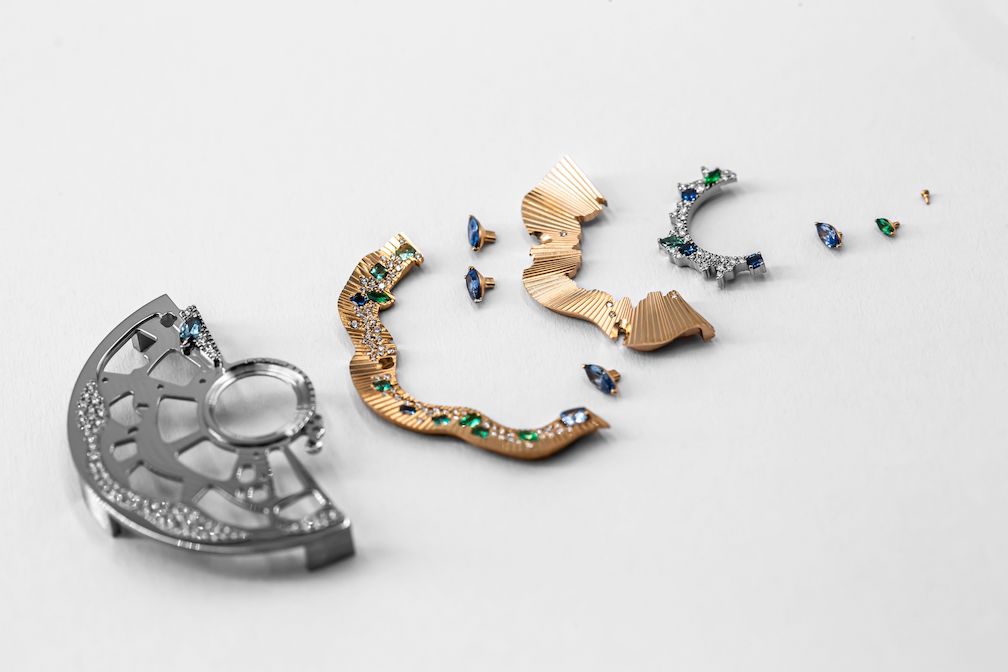
The making of the Inverse rotor for the Dior Grand Bal watches is no easy feat and requires goldsmithing, gem setting and watchmaking prowess.
Sometimes, it’s all about talking the talk. This is especially true in the watch world. So today we are taking a look at some basic vocabulary words every newbie watch collector should use when describing a watch, both the outside and the inside. More complex watch definitions coming soon. These basic definitions are essential watch talk for beginner watch collectors.
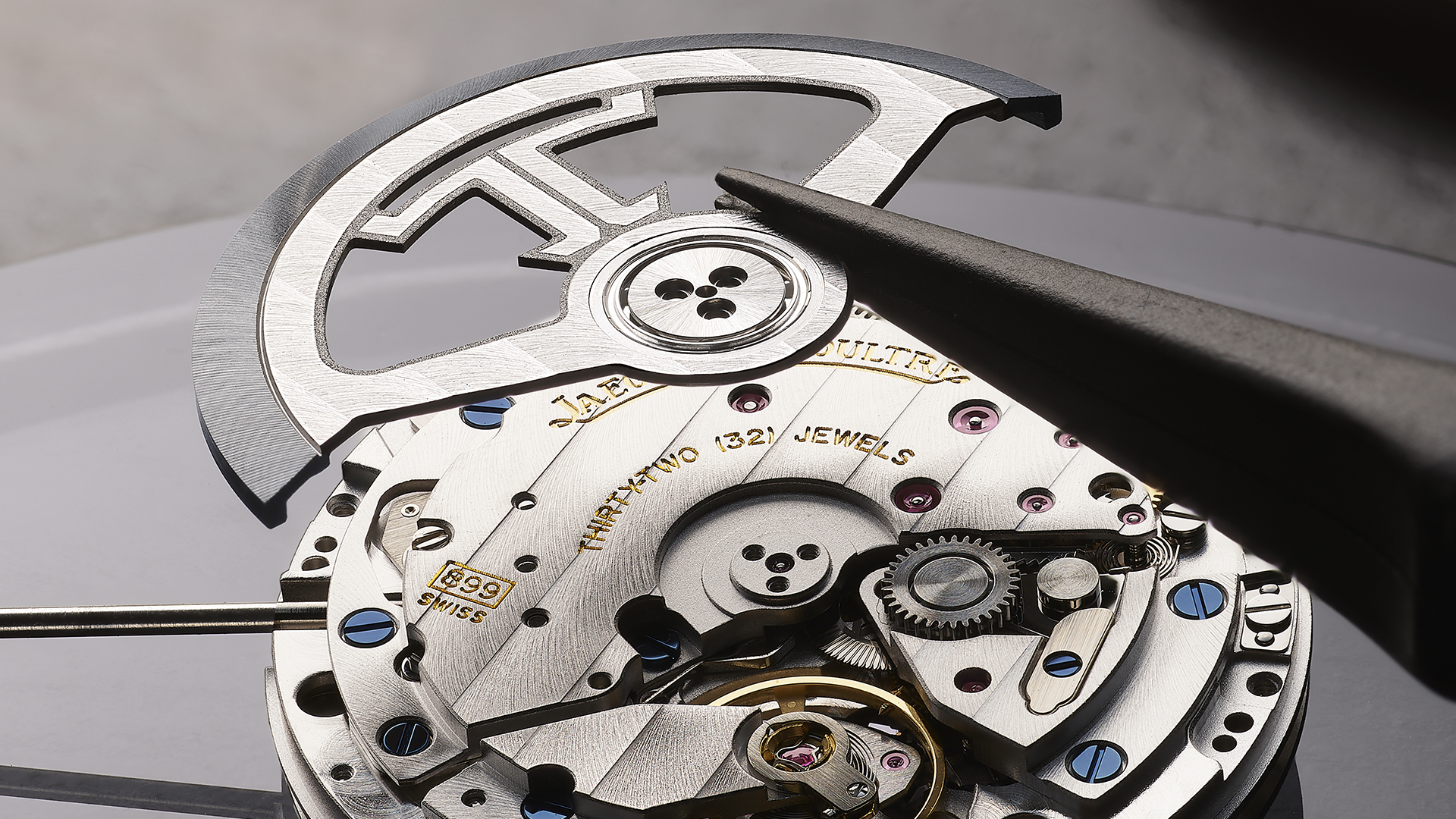
The Jaeger-LeCoultre Automatic Date Green watch is powered by the brand’s Caliber 899 automatic movement.
Movement/Caliber: Every watch is powered by a movement that resides inside the case. These movements are typically made by companies that specialize in building only movements, or are sometimes built in-house exclusively for or by the watch brand. Sometimes the movement is referred to as the Caliber (usually with a reference number that refers to the exact caliber being used). Movements are either quartz powered (see below) or mechanical – meaning tiny mechanical pieces such as springs, levers and gears, work together harmoniously to power the watch. (see below).
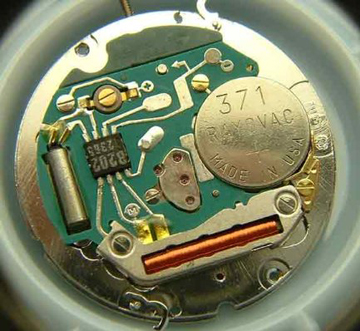 Quartz movement: If a watch houses a quartz movement, it means it has a tiny electronic circuit board inside the movement, as well as a battery. Quartz watches continue to operate without being wound until the battery inside is totally drained. Then a new battery must be installed. Battery life is usually about three to five years.
Quartz movement: If a watch houses a quartz movement, it means it has a tiny electronic circuit board inside the movement, as well as a battery. Quartz watches continue to operate without being wound until the battery inside is totally drained. Then a new battery must be installed. Battery life is usually about three to five years.
Mechanical movements: Mechanical watches do not have batteries or circuit boards. Instead, they operate on the fine mechanics within that usually use springs to release power consistently. Mechanical watches come in two forms: self-winding (automatics), meaning they wind themselves via the motion of the wrist; manual winding, meaning the owner must wind the watch to keep it running. Make no mistake, though, if a self-winding watch is left on a dresser or in a drawer for too long, it will need to be picked up, reset and wound to get it going again.
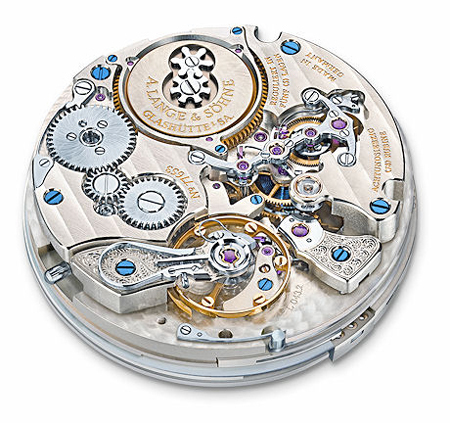
A mechanical hand-wound or manual-wind watch movement is one wherein the owner of the watch must wind the movement with his own hands.
Power Reserve: Every mechanical watch has a certain amount of time that it can run without being wound either manually, or, in the case of automatic mechanical movement, by shaking the timepiece slightly after it has been sitting to keep it powered. The amount of time a mechanical watch can run for depends on a variety of factors inside the movement, including number of barrels, length of springs, type of rotor etc. That amount of time the watch has of remaining power after first being worn or wound, is referred to as power reserve. For instance, if a watch has 48 hours of power reserve, once it wound, it will run for 48 hours before needing to be rewound. Sometimes watches offer a power-reserve indicator that shows how the power is winding down and when the power is very low, often depicts the reserve using a red color as a warning to the wearer.
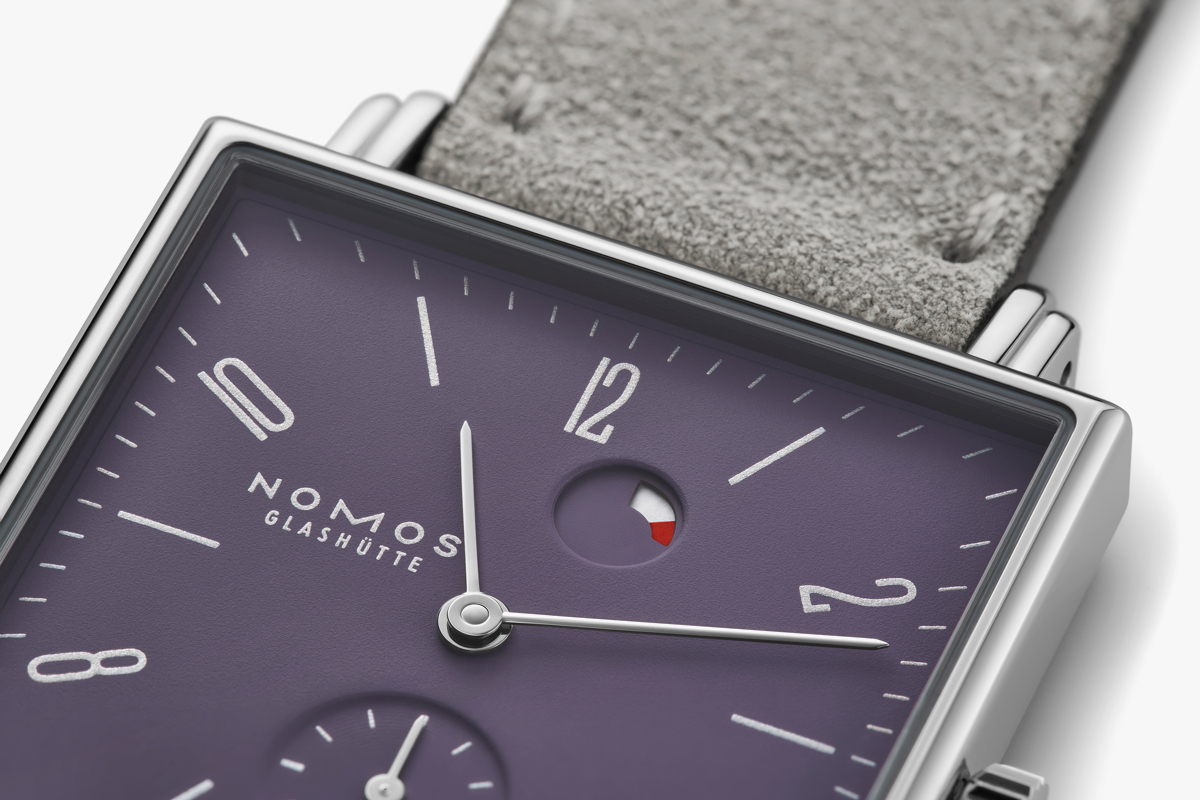
The Nomos Tetra Plum watch features the brand’s swing-system escapement and patented power reserve indicator.
Jewels/rubies: Sometimes you hear about a mechanical watch movement having 17 jewels, or 35 jewels inside. This is not a decorative stone, but rather a highly functional stone. The jewels — generally referred to as rubies –are typically synthetic rubies that are placed inside the movement to reduce friction at key points where metals might meet. The jewels are placed at pivot points to keep the movement running smoothly. The number of jewels inside a movement varies based on the pivot points.
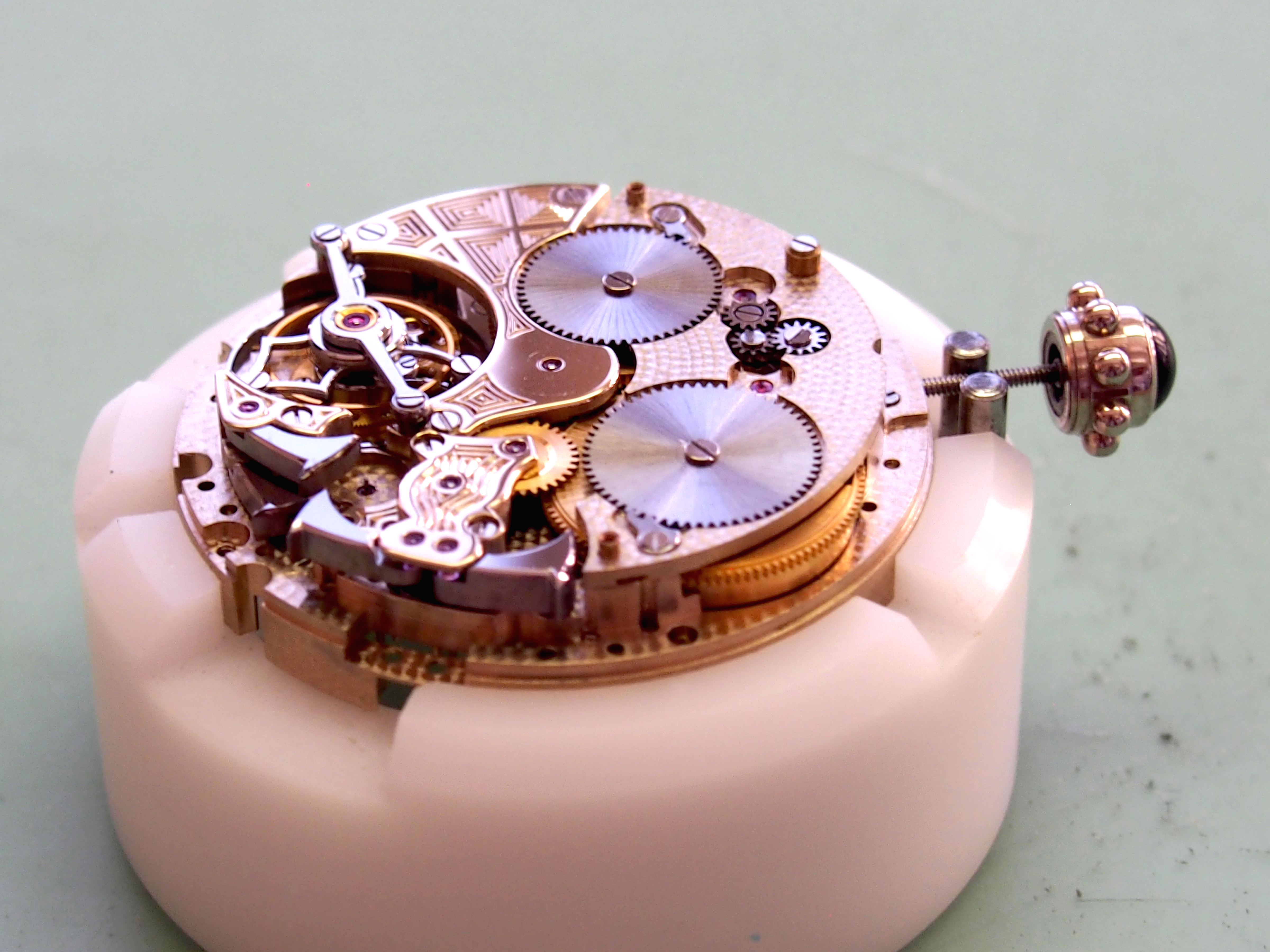
Rubies inside watch movements act as ball bearings and eliminate friction.
Case: The entire outer structure of the watch that holds the movement is referred to as the case. It generally consists of the case and case-back. Ccases are made in precious metals like gold or platinum, stainless steel, titanium another high-tech materials like ceramic, carbon fiber and a host of composite. Cases have a millimeter size that indicates their diameter (34,36,38, 40, etc.).
Bezel: The bezel is the metal that surrounds the watch dial and often looks as though it is part of the case. In dive watches, the outer bezel can rotate, to help divers time their underwater adventures. Fixed bezels (that do not rotate) are mostly decorative in nature.
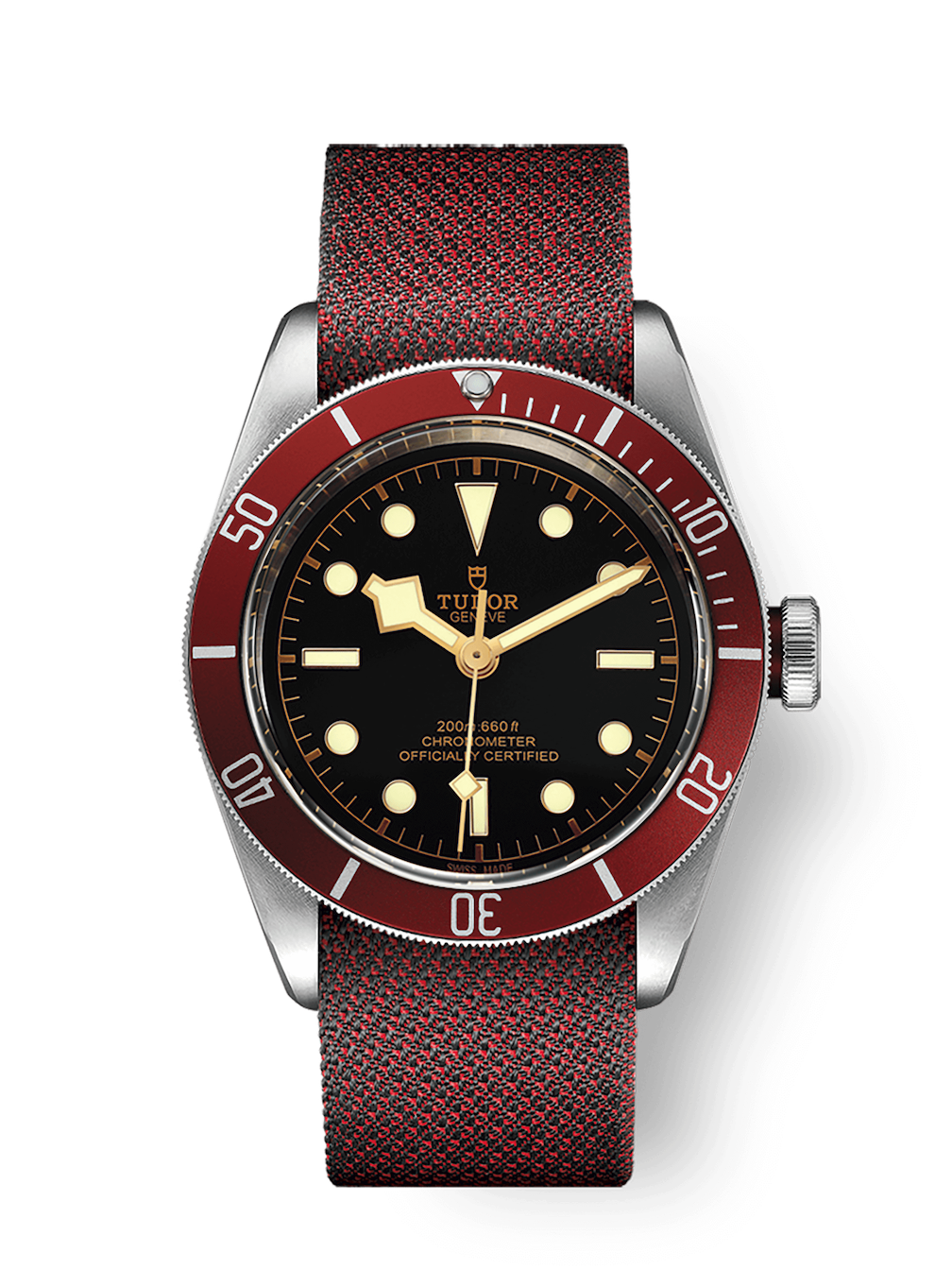
Tudor Black Bay with red ceramic bezel, Snowflake hands and oversized crown.
Dial: Sometimes people casually refer to the dial of the watch as the face, but the correct term is “dial.” The dial is where the numbers/markers and other time indications are placed. These are usually made of metal and then painted, bathed in a coating, or can be made of other substances like mother of pearl, meteorite, etc.
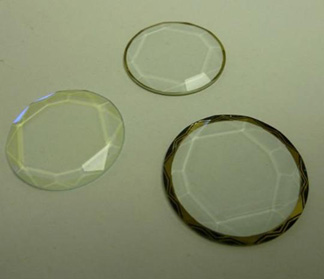
a variety of watch crystals
Crystal: This is the protective cover over the dial. Luxury brands predominantly use transparent sapphire crystals, but there are also mineral crystals on the market, as well. Sapphire crystals (sometimes also serving as see-through casebacks to allow viewing of the movement) are not natural sapphire, but rather man made. Many brands take the extra time and care to coat their sapphire crystals with anti-reflective (anti-glare) treatments.
Crown: Sometimes also (inaccurately) referred to as the “stem,” the crown is the protrusion at 3:00 on the case that enables setting of the watch’s functions. It features a long stem that reaches from the outer crown to the inner workings of the watch and is a delicate part. Some watches have Screw-Down crowns (meaning that they need to be screwed and unscrewed to set the watch) to assist with higher water resistance.
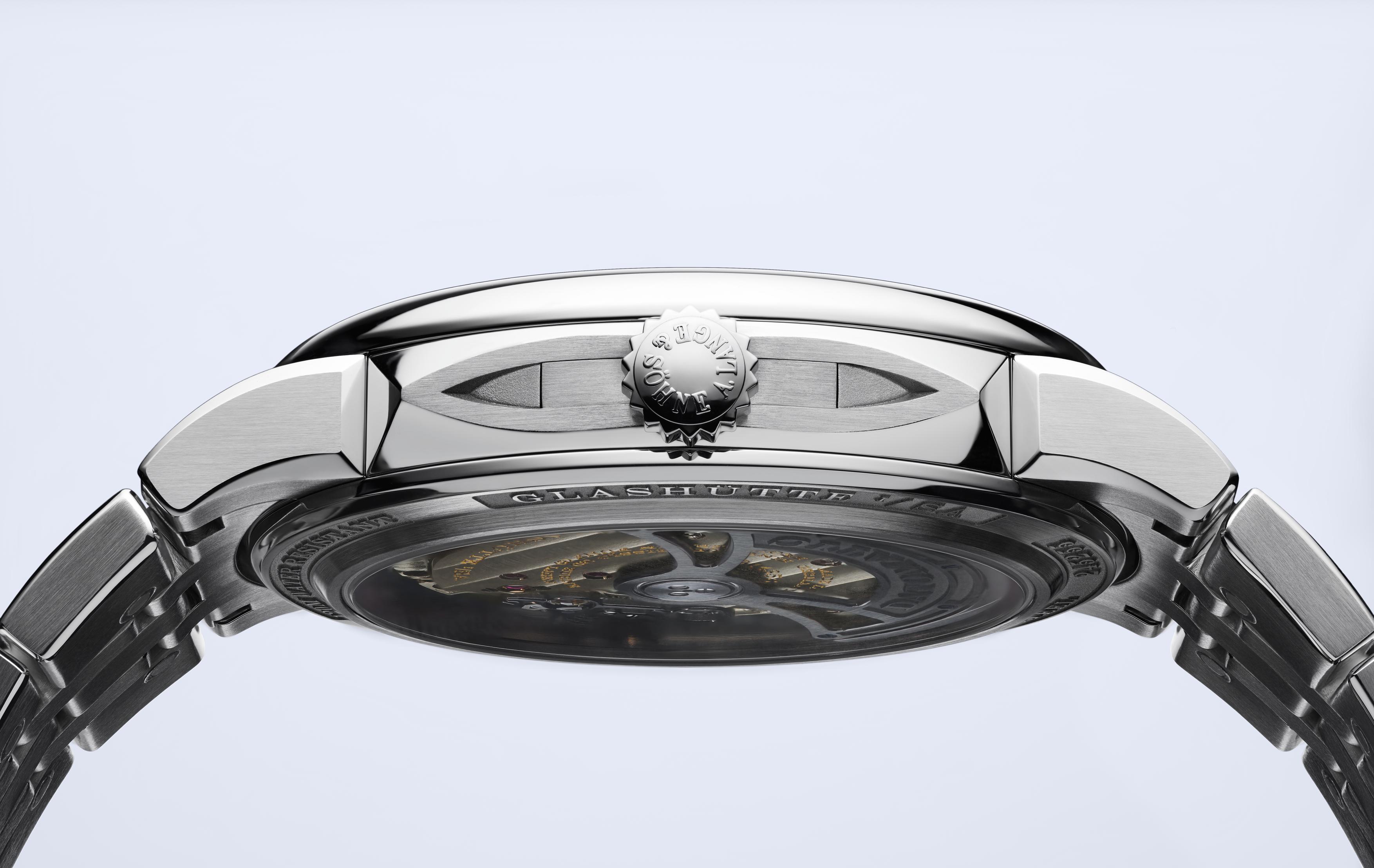
Profile view of the A. Lange & Sohne Odysseus watch
Lugs: The lugs are the case-to-bracelet (or strap) attachments. Some people refer to these as horns.
Strap/Bracelet: Using the term “band” is inaccurate and elementary. top watch brands take great pride in creating some of the most sumptuous leather straps on the market. They should be called leather straps (and you should know the materials they are made of). Metal “straps” are called bracelets. Most straps and bracelets have one of two kinds of closures: tongue (or pin) buckles (with holes on one side of the strap and a pin that fits through them on the other side) or Safety Folding clasps wherein the sides fold over one another and click together. These are sometimes also referred to as deployment (deployant) clasps. There are also NATO straps but that is an entirely different story (coming soon).
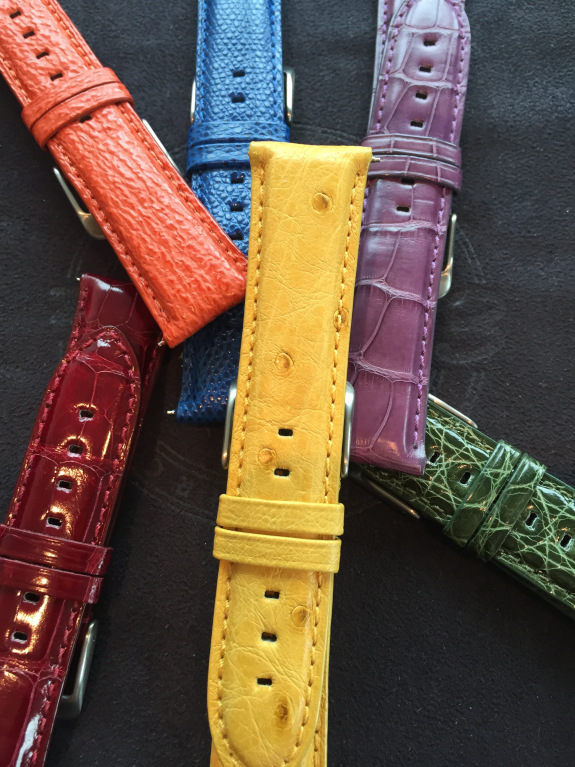
Leather straps come in a huge variety of textures and colors.
By using the right terminology when talking about watches, you present yourself as assured, knowledgeable and respectful of the product and are more likely to get others to engage in your new passion.





